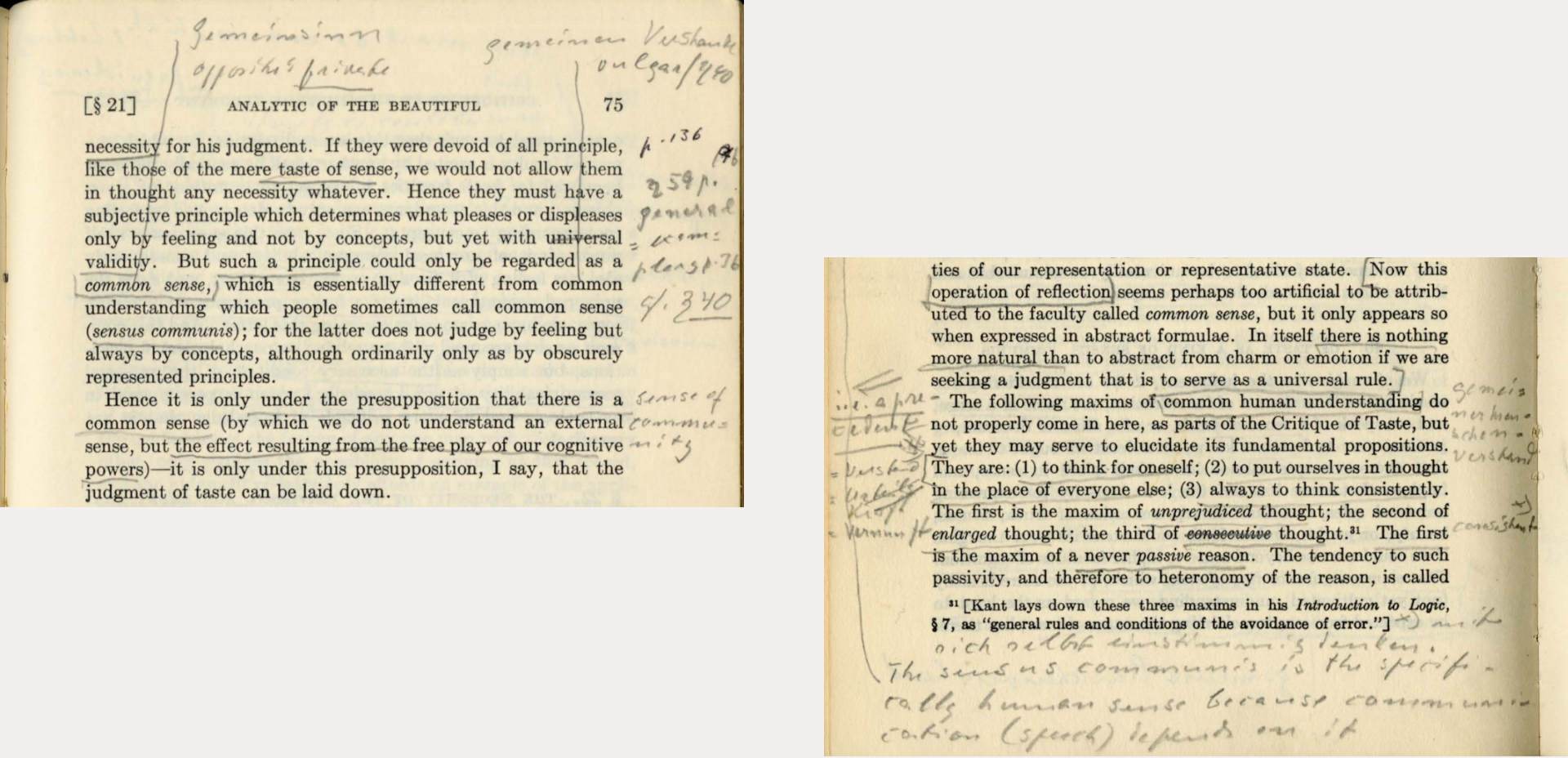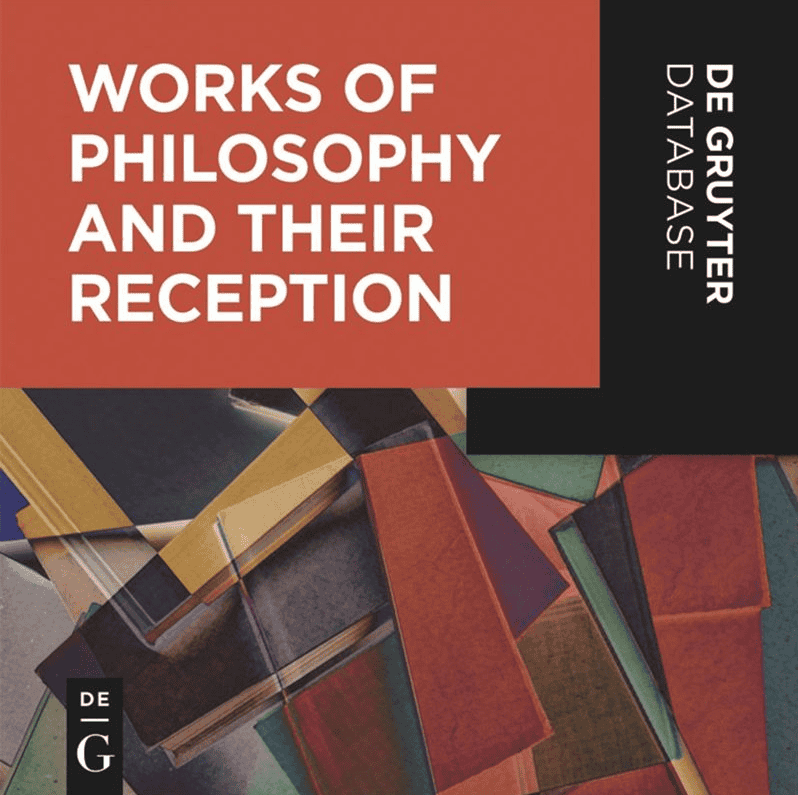Hannah Arendt’s Lectures on Kant’s Political Philosophy
In the fall of 1970, Hannah Arendt delivered a series of lectures on Immanuel Kant’s political philosophy. She was scheduled to teach Kant again in the spring of 1976, though her death in December 1975 prevented her from doing so. Indeed, the fact of her untimely death is central to the story of Arendt’s Kant lectures – both their origin and the scholarly attention given to them.
Being lecture notes, they were, of course, not published – nor were they ever intended for publication. Relegated to a cardboard box and stored in the Manuscript Division of the Library of Congress in Washington, D.C., they became the interest of a then-graduate student, Ronald Beiner, who sought to read them for the purposes of his dissertation research.
As a reader of Arendt, Beiner was aware that she had not completed her final major work, The Life of the Mind. It was conceived of as a three-volume work, yet Arendt had only completed the first two, ‘Thinking’ and ‘Willing’. In a story now oft repeated, the title page to the third part, ‘Judging’ was found in her typewriter after her death. Since then, readers have turned to Arendt’s lectures on Kant’s third Critique (the Critique of the Power of Judgment) and its theory of aesthetic judgment for some clues as to what she might have said.
A few years later, Beiner approached Mary McCarthy – one of Arendt’s closest friends and her literary executor – regarding the possibility of publishing these lectures in full. While his suggestion was initially met with resistance, McCarthy eventually came around to the idea. Beiner would go on to edit and compile Arendt’s lecture notes, which were published in 1982 by the University of Chicago Press as: Lectures on Kant’s Political Philosophy.
You are currently viewing a placeholder content from YouTube. To access the actual content, click the button below. Please note that doing so will share data with third-party providers.
Ronald Beiner tells the previously undocumented story of the genesis of the Kant lectures.
Since the publication of the Kant lectures just over forty years ago, there has been a surge of interest in Hannah Arendt’s thought – both among scholars and the public more broadly. In the wake of the 2016 election of Donald Trump, sales of Arendt’s The Origins of Totalitarianism (1951) increased by 1,000 percent – even topping the Amazon bestseller list. Books such as Richard Bernstein’s Why Read Arendt Now (2018) and, more recently, Lyndsey Stonebridge’s We Are Free to Change the World: Hannah Arendt’s Lessons in Love and Disobedience (2024) demonstrate the demand among popular audiences for Arendt’s political thinking.
Even though Arendt’s more overtly political texts have been cited much more than the Kant lectures, there has been a steady uptick in the last decade or two, accompanied by a growing multilingual and interdisciplinary engagement. As of 2024, the lectures have been translated into 16 languages, ranging from French to Chinese to Slovenian. And while most of the treatments have come from the corners of philosophy and political theory, scholars from fields ranging from film studies to urban planning have begun to make use of the Kant lectures in interesting ways.
“In the wake of the 2016 election of Donald Trump, sales of Arendt’s The Origins of Totalitarianism (1951) increased by 1,000 percent.”
These recent developments set the stage for a recently published volume – the first academic publication to be devoted exclusively to Arendt’s lectures on Kant. As part of De Gruyter’s new research platform, Works of Philosophy and Their Reception, this volume seeks to tell the story of how the lectures have been received thus far. It also seeks to facilitate their continued reception both in and beyond philosophy and political theory – bringing together scholars from across the arts, humanities, social sciences and law.
From the Idiosyncratic to the patently false
The Kant lectures are most well-known for Arendt’s provocative claim that Kant’s aesthetics contains his true but unwritten political philosophy. Arendt famously appropriated Kant’s notion of aesthetic judgment for political purposes, seeing it as a model for the type of claim that places a demand on others without appealing to the idea of truth or objectivity to settle the matter. While Kant himself addresses the political within the context of his moral and practical philosophy, Arendt prefers the aesthetic domain for its emphasis on human plurality and community.
Arendt appears to have arrived at this reading of Kant thirteen years before delivering the lectures. In a 1957 letter to Karl Jaspers, she writes:
I’m reading the Kritik der Urteilskraft [Critique of the Power of Judgment] with increasing fascination. There, and not in the Kritik der praktischen Vernunft [Critique of Practical Reason], is where Kant’s real political philosophy is hidden […].
Arendt’s turn to Kant’s third Critique is most often seen as a kind of creative misreading. Those who discuss the merits of her Kant interpretation almost universally conclude that she got Kant wrong – however interesting or fruitful her conclusions might have been. She ranges from making claims that appear to be patently false (Kant “never wrote a political philosophy”), pejorative (his Doctrine of Right is “rather boring and pedantic”), speculative (“there exists a political philosophy in Kant but […] he never wrote it”), and idiosyncratic (see the above quote). These are undoubtedly provocative claims. Yet focusing on them also has the potential to distract us from the genuine philosophical insights that Arendt’s reading of Kant brings, or the ways in which she may have even gotten Kant right.

While judgment is certainly one of the most prominent themes in the lectures and tends to take center stage in most conversations about them, it is by no means the only philosophical topic that Arendt discusses in them. Rather, Arendt’s treatment of judgment leads to a consideration of the twin activities of imagination and reflection. In turn, her treatment of imagination invokes the notions of the example and exemplarity, along with the function of schematism – not to mention the ability to think from the standpoint of the other, which she calls an “enlarged mentality.”
All this paves the way for a discussion of human sociability and the sensus communis, but also beauty, taste, disinterestedness and impartiality. Scattered throughout are remarks on the nature of humanity, history, progress, publicity and critical thinking. Lingering in the background is the relationship between aesthetics and politics more generally, the ‘old tension’ between philosophy and politics, the ‘problem’ of theory and practice, and the place of morality in politics.
Why we should take arendt on kant more seriously
*In this respect, it is important to be aware of the Kritische Gesamtausgabe [Critical Edition] – an ongoing project that will present all of Arendt’s published and unpublished work for the first time, together with commentary. This includes the ‘Lectures on Kant,’ which will look at all of Arendt’s lecture materials that deal with Kant. Click here for more information on this project.
Approaching Arendt’s Kant lectures through the lens of Works of Philosophy and their Reception raises several important questions. To begin with – what exactly are the Kant lectures? This term is most often used to refer strictly to the Beiner edition, which contains the lectures that Arendt delivered in the fall of 1970. Yet these were by no means the only lectures that Arendt delivered on Kant. In addition to the earlier version of this course, as well as courses on Kant’s first Critique and his moral philosophy, Kant appears in many other courses. Thus, when we speak of Arendt’s Kant lectures, we should want to know what exactly we are referring to.* By extension, whether and to what extent we can read the Kant lectures as part 3 of The Life of the Mind remains a matter of some controversy.
We should also consider in what sense the Kant lectures are a ‘work of philosophy.’ We need not deny that they are, though we must admit that they are certainly unconventional – both as a work and as a work of philosophy. As a work, they were never intended to be published. Type-written for her own personal use – namely, to deliver classroom lectures – and heavily annotated by hand, they were likely never intended to be read either. Arendt’s friend and publisher, William Jovanovich (of Harcourt Brace), believed they were too unpolished to be published in full.
Arendt has been largely ignored by analytic philosophers and Kant scholars alike. Most of the scholarship on Arendt in the English-speaking world comes from political theorists – not philosophers. Within the field of philosophy, virtually all the literature comes from those working in the continental tradition. Indeed, there is not a single article in a top-ranked analytic philosophy journal on Arendt.
In short, philosophers have by-and-large not taken an interest in her. In one sense, this shouldn’t be entirely surprising. Arendt famously rejected the label of ‘philosopher’ and was highly critical of the Western philosophical tradition. This being the case, one might think that it is fitting for contemporary philosophers not to have paid her much attention. And yet another aim of this edited volume in Works of Philosophy and Their Reception is to provide some reasons for thinking that Arendt is someone who not only ought to be included in the philosophical canon but whom Kant scholars should take seriously as a reader of Kant – one who is not only creative and interesting, but who picks up on subtleties and provides insights that others have not.
[Title Image by Barbara Niggl Radloff [CC BY-SA 3.0], via Wikimedia Commons]
